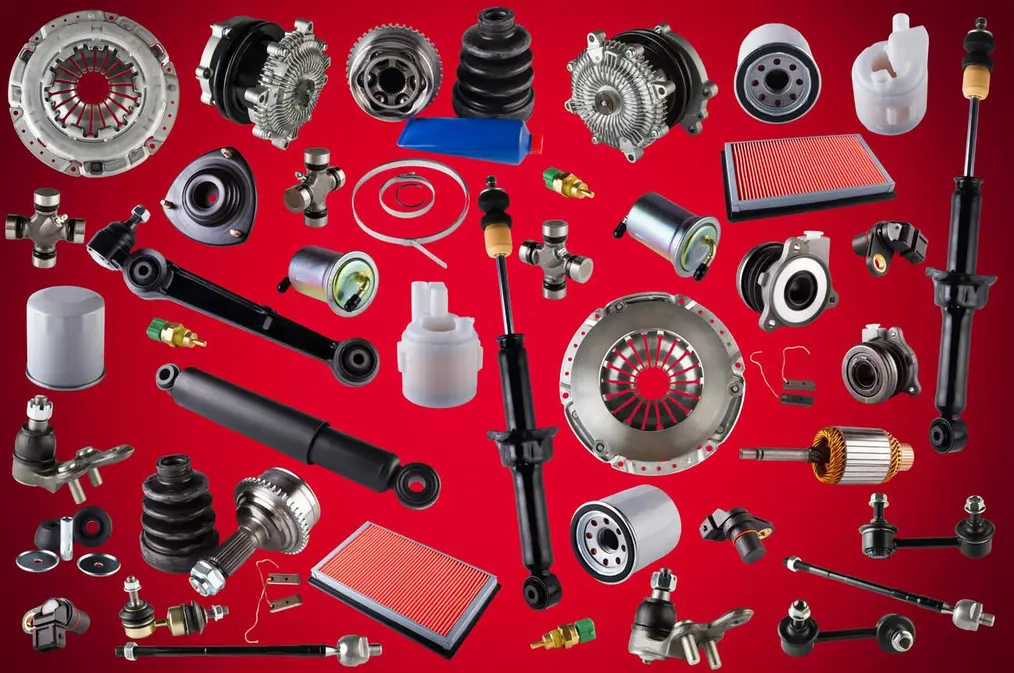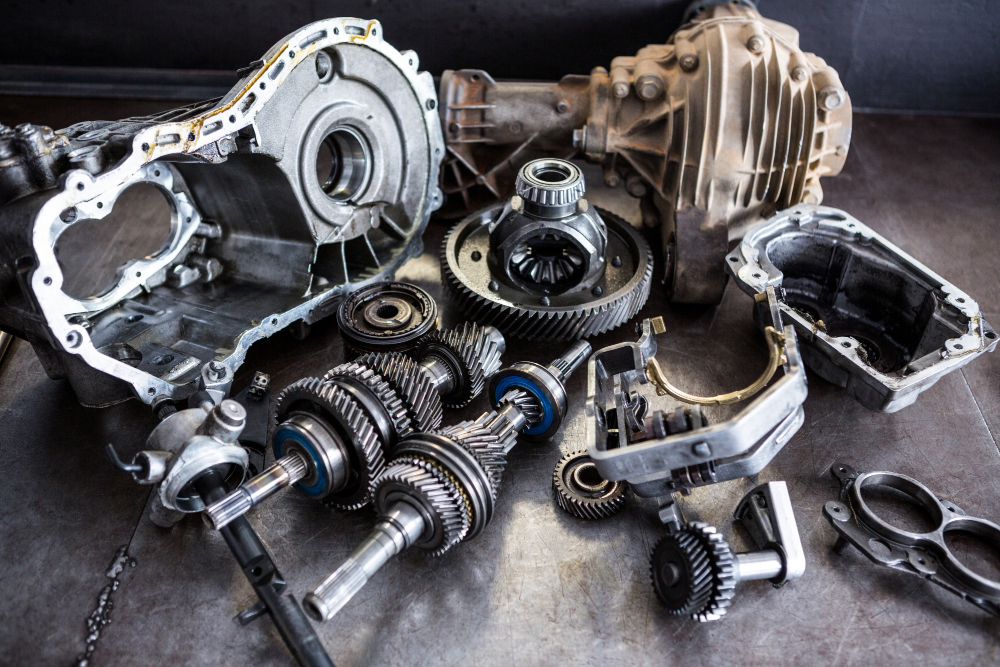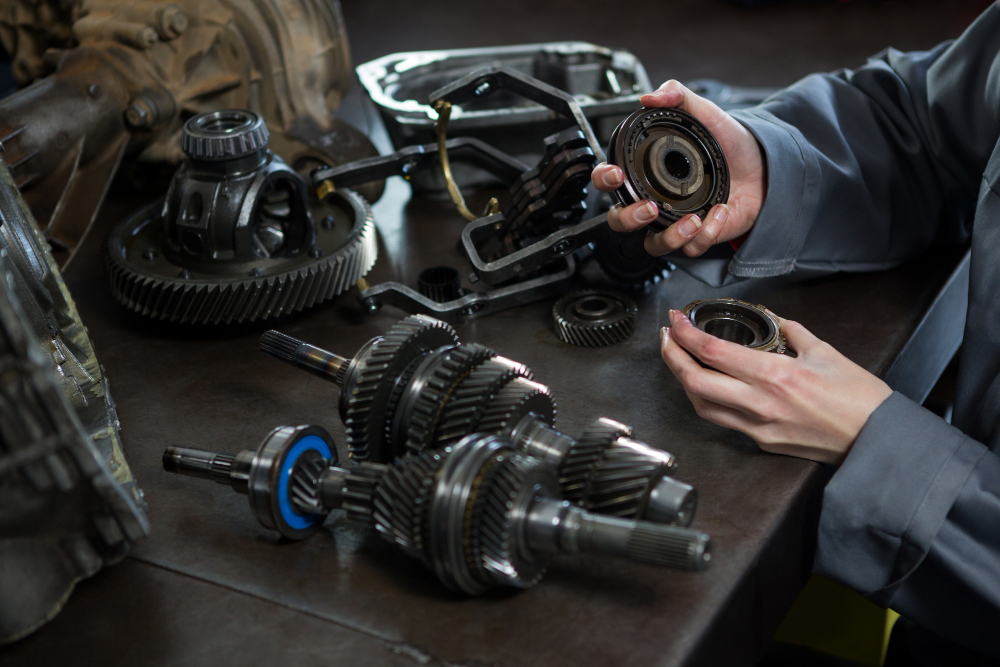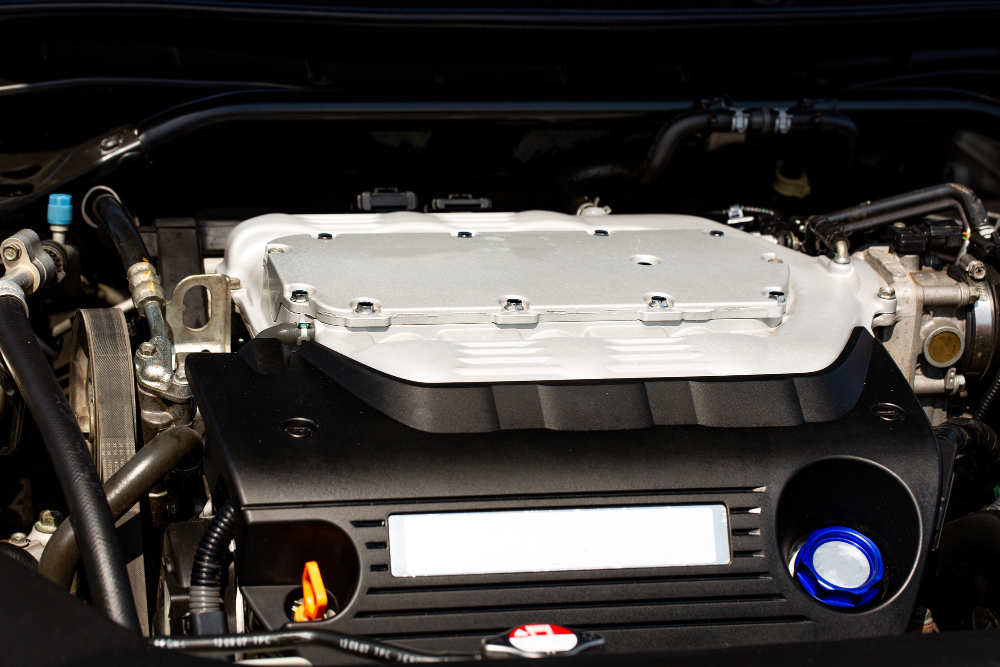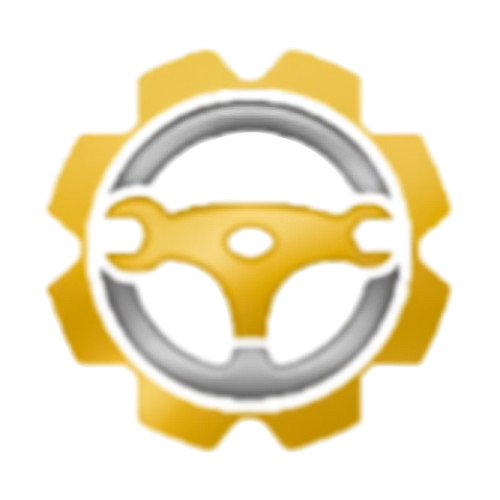Table of Contents
- 1. Why Are Some Car Parts Discontinued in the First Place?
- 2. Common Mistakes to Avoid When Searching for Discontinued Car Parts
- 3. Online Marketplaces: The First Place Most People Search
- 4. Where Can You Find Discontinued Car Parts in Junkyards and Salvage Yards?
- 5. OEM Dealerships and Surplus Inventories
- 6. Online Forums, Car Clubs, and Collector Communities
- 7. How to Verify a Discontinued Part Before You Buy
- Conclusion: Finding Discontinued Car Parts is Hard—but Not Impossible
- FAQS
If you’ve ever tried to fix up an old car, restore a vintage car, or replace a broken part in an older car, you know how hard it can be to find parts that are no longer made. Parts for current cars are easy to find, but it can be hard to find important parts for discontinued models because they are no longer being made.
No matter if you’re a mechanic, a fan of classic cars, or just someone who wants to keep their old car going, it can be hard to find old car parts. But you can find even the most complicated parts if you have the right plan and some insider knowledge. It usually doesn’t cost too much to do so.
This blog is meant to show you how to get old car parts. It includes tried-and-true ways, lesser-known sources, expert advice, and things you should not do. We’ll talk about both online and offline choices, show you how to make sure the part is real, and even touch on how to get it from another country if it’s no longer sold in your own.
This blog can help you find discontinued Honda parts or a rare Saturn gearbox module. It will be easy for you to find old car parts after reading this post. You won’t have to waste time or money or worry about scams.
Whether you’re after OEM-quality second-hand parts or rare discontinued components, there are reliable ways to source them safely.
Let’s begin your journey into the hidden world of automotive parts that time tried to forget.
1. Why Are Some Car Parts Discontinued in the First Place?
Before you look into where to find discontinued car parts, you should know why they are discontinued in the first place. Parts for cars don’t just disappear overnight. Usually, it’s because of business choices, new technology, or less demand.
1.1 Vehicle Discontinuation
When an automaker discontinues a model, the production of its parts slowly tapers off. Over time, parts like dashboards, transmissions, or control modules may no longer be manufactured or stocked. If the vehicle wasn’t a best-seller or lacked a strong aftermarket following, discontinued car parts become inevitable.
1.2 Supplier Contracts End
Manufacturers often outsource the production of parts. If a supplier contract ends and there’s no demand to justify a new one, those specific parts quietly disappear from the market. This especially affects electrical components and proprietary technology.
1.3 Technological Obsolescence
Some parts become outdated due to shifts in automotive technology. For example, carburetors were once standard, but today’s fuel injection systems have made them nearly extinct in new vehicles. The result? Discontinued car parts that can only be found through niche suppliers or restorers.
1.4 Low Sales or Limited Production Runs
Special editions or low-production vehicles are most at risk. Fewer cars mean fewer parts in circulation. If the original parts supplier no longer exists or the OEM ceases reproduction, the aftermarket rarely steps in due to cost.
Understanding these reasons gives context to the challenge—and highlights why learning how to get discontinued car parts requires a mix of patience, strategy, and the right sources.
2. Common Mistakes to Avoid When Searching for Discontinued Car Parts
If you’re on the hunt and want to fix up or restore your car, it’s easy to get caught in common pitfalls. It’s not enough to just look in the right places to find discontinued car parts. You also need to be careful not to take the wrong steps, which could waste your time, money, or even safety.
2.1 Rushing the Purchase
When people are learning how to get old car parts, one of the worst things they can do is take the first tip they come across. When people are in a hurry, scammers and opportunists often take advantage by selling used or fake parts for a lot more than they’re worth. Before you buy, you should always check the part number, read reviews of the seller, and ask for pictures.
2.2 Ignoring Compatibility
Parts for a lot of older cars are different depending on the model, year, or market. An old part from a model that is close to yours might not work with yours. Before making a purchase, you should always compare OEM numbers and look at the manufacturer’s manual or talk to a skilled mechanic.
2.3 Not Exploring International Markets
Don’t limit your search to local or domestic suppliers. Sometimes, where to find discontinued car parts is as simple as looking overseas. Japanese, European, and Canadian markets often have stock long after parts are discontinued in the U.S. Just be sure to factor in shipping times, costs, and customs.
2.4 Trusting Only One Channel
Many buyers only check Used Auto Parts Pro or local junkyards. That’s a mistake. Discontinued car parts can be found in forums, specialty salvage yards, collector networks, and even manufacturer surplus warehouses. Knowing how to find discontinued car parts means diversifying your sources.
2.5 Ignoring Rebuild or Refurbish Options
Sometimes, finding the exact part may be impossible—but that doesn’t mean the hunt ends. Rebuild kits, refurbished units, or aftermarket equivalents can sometimes serve your needs. Not exploring these options can leave you stuck.
Avoiding these mistakes not only protects your wallet but dramatically increases your chances of success in finding the right part the first time.
3. Online Marketplaces: The First Place Most People Search
Online markets are often the first place people look when they want to find old car parts. Always confirm the seller isn’t listing restricted or counterfeit parts—especially if you’re in states like California, where CARB (California Air Resources Board) rules can limit the use of certain used components. And for good reason: sites like Used Auto Parts Pro, Facebook Marketplace, eBay, and Craigslist have a huge selection of new and used car parts, and the prices are often very good. But you have to do more than just type in your part number to go this way.
3.1 Used Auto Parts Pro
Unlike general marketplaces, Used Auto Parts Pro focuses specifically on used, genuine, and OEM-quality auto parts. The platform is designed to help mechanics, DIYers, and everyday drivers locate discontinued or hard-to-find parts without the hassle of searching multiple sites. With vendor checks, fraud protection, and nationwide delivery, it simplifies the process of sourcing parts that may no longer be available through dealerships.
Tip: If you’re looking for peace of mind along with affordability, Used Auto Parts Pro is a smart starting point before moving on to broader marketplaces.
3.2 eBay: The Global Garage Sale
eBay remains one of the most reliable places to search for discontinued car parts. Sellers from around the world list everything from rare dashboards to obsolete fuel pumps. You can use the advanced filters to search by part number, condition (used, new, old stock, refurbished), and location. If you’re learning how to get discontinued car parts, start by bookmarking eBay alerts for specific part numbers.
Tip: Always check the seller’s rating and ask for close-up pictures to ensure it’s not a reproduction or damaged component.
3.3 Facebook Marketplace: Local Goldmine
A lot of enthusiasts and hobbyists sell parts locally on Facebook.. It’s especially helpful for people who want to find old auto parts without having to pay a lot for shipping. There are even local groups where you can buy and sell cars of a certain make or model.
Warning: It has a lot of great deals, but it’s also a great place to find fake or misleading parts. Don’t pay for something until you see it in person.
3.4 Craigslist: Old-School Still Works
Though less popular today, Craigslist still holds potential for rare finds. People cleaning out garages or selling off project cars often list obscure components—many of which qualify as discontinued car parts. Use regional searches and be patient; the right listing may come around unexpectedly.
3.5 Other Platforms: OfferUp, Letgo, and Specialty Sites
OfferUp and Letgo also host private sellers who deal in niche car components. While these apps aren’t as robust as eBay, you might find that one rare alternator or wiring harness you’ve been looking for.
For those seriously dedicated to restoration, learning where to find discontinued car parts through these channels can yield surprising results—if you know how to spot quality and verify authenticity.
4. Where Can You Find Discontinued Car Parts in Junkyards and Salvage Yards?
If you want to learn how to get old car parts, don’t miss the treasure troves that are hidden in plain sight: specialty scrapyards and salvage yards. These places are gold mines for hard-to-find parts, and they’re often the hidden heroes when it comes to finding old, rare, or even vintage car parts.
4.1 Why Salvage Yards Are a Smart First Stop
Most people associate junkyards with rust and wreckage, but many are highly organized operations that catalog parts from discontinued vehicles. Unlike general scrapyards, specialty salvage yards focus on certain makes or models—think Toyota-only or classic American muscle cars—making them ideal for those specifically wondering where to find discontinued car parts.
4.2 How to Approach Them
Call ahead and ask:
“Do you have a stock list for discontinued parts?”
“Can you check your system for [exact part] from [year/model]?”
Many yards use inventory systems like Hollander Interchange or Car-Part Pro, which allow them to check compatible part matches—even across different makes or model years. This is key for those unsure how to find discontinued car parts without knowing every interchangeable alternative.
4.3 Local vs. National
You might be surprised at what you find at the local scrapyard, especially if your car is popular in the area. For rarer or more local types, on the other hand, national recovery networks are a must. Here are some well-known ones: LKQ Pick Your Part
- Pull-A-Part
- Fenix Parts
- U-Pull-It Auto Parts
These companies ship all over the country and focus on selling old auto parts. In some cases, they offer warranties and part promises.
4.4 Ask the Right Questions
When speaking to a salvage yard, ask:
- Has the part been tested?
- What’s the condition? (OEM? Used? Rebuilt?)
- Is there a return policy?
These questions can protect you from wasting money on unusable parts.
5. OEM Dealerships and Surplus Inventories
While most people wouldn’t think to check with dealerships when looking for discontinued car parts, you’d be surprised how many OEM (Original Equipment Manufacturer) parts are still sitting in surplus inventories—just waiting to be found.
5.1 Start With Your Local Dealership
Your local dealership may not have the part you’re looking for on-site, but they usually have access to a national dealer network that can search for old stock across the country. Many dealerships even have relationships with factory-authorized resellers who specialize in clearing out outdated parts.
If you’re wondering how to get discontinued car parts the “official” way, start by calling the parts department and providing your VIN or exact part number. Be polite but firm—ask if they can check archived inventory or locate NOS (New Old Stock) parts.
5.2 Surplus Warehouses Are Hidden Gems
Warehouses that store surplus inventory often stock discontinued parts.. A lot of the time, these companies buy large amounts of old stock from stores or factories that are closing down. You can often find rare OEM parts for a lot less than the original price because they aren’t limited by how much dealerships can charge.
Here are some examples:
- Vintage Parts Inc. – An authorized outlet for OEM surplus.
- OEM Surplus Dealers – Independent sellers who specialize in hard-to-find components.
These are especially useful when you’re trying to figure out where to find discontinued car parts that are still sealed and genuine.
5.3 Document Everything
When dealing with OEM sources or surplus vendors, request:
- Photos of the part and packaging.
- The part number (to cross-check compatibility).
- A written confirmation that it’s OEM and not an aftermarket equivalent.
This is critical when learning how to find discontinued car parts that must meet strict vehicle safety or performance standards.
In short, dealerships and surplus vendors may not be the most obvious answer—but they’re often the most reliable when it comes to finding authentic, unused components that are otherwise impossible to locate.
6. Online Forums, Car Clubs, and Collector Communities
You are not the only one who has looked in scrapyards and online markets but still struggles to find outdated car parts. Sometimes, the best place to find very rare parts is in groups of people who are crazy about your car type. That’s why there are websites, car clubs, and collecting groups.
6.1 Online Car Forums: Knowledge & Inventory
A lot of sites that are just for cars have areas where people can buy, sell, or trade used or spare parts for cars. You can get a lot of technical help, different part choices, and hacks for making things work with each other on these sites.
Some well-known examples are:
- Honda Tech Toyota Nation NASIOC (Subaru)
- BimmerForums
When you ask members where to find discontinued car parts, you’ll often be surprised how quickly someone will respond with a lead—or even offer the part directly.
6.2 Join Facebook Groups and Subreddits
Social platforms are filled with niche communities. Facebook groups like “Classic Toyota Parts Swap” or “GM Vintage Restoration” allow direct interaction with sellers and collectors. Subreddits like r/Justrolledintotheshop or r/Cartalk sometimes host discussions and offers about discontinued car parts too.
Search for groups by model or manufacturer, and don’t hesitate to make a post asking how to find discontinued car parts. These are some of the most responsive communities online.
6.3 Attend Local Meetups and Collector Events
Car shows, classic car meets, and swap meets are prime spots to network. Enthusiasts bring spare parts to trade or sell—often rare components they’ve collected over years. It’s also a great way to build connections with people who can guide you when you’re unsure how to get discontinued car parts in the future.
Many clubs even maintain their own inventory databases or email lists for members looking to buy or sell hard-to-find parts.
6.4 Why This Route Works So Well
People in these communities understand the frustration of trying to track down discontinued car parts. They’re more likely to go out of their way to help, verify authenticity, or offer advice on installation and part fitment.
It’s not just about the part—it’s about becoming part of a network that continues to grow in value long after your car is back on the road.
Option | Pros | Cons | Best For |
OEM Surplus (Dealers) | Genuine, warranty | Costly, limited stock | Safety-critical parts |
Aftermarket | Cheaper, wider | Quality varies | Budget repairs |
U-Pull Salvage Yard | Very affordable | Time-intensive | DIY mechanics |
Online Marketplaces like Used Auto Parts Pro | Wide variety | Risk of fakes | Rare discontinued parts |
7. How to Verify a Discontinued Part Before You Buy
Once you’ve found the old car parts you need, the next step is just as important: making sure they are real. Not only does buying the wrong part, or even worse, a fake one, waste money, but it can also hurt your car or make it less safe.
So, how do you know if that discontinued alternator on eBay is real?
The answer is to always cross-check OEM numbers and ask for proof of origin.
Verification is very important if you want to learn how to get outdated car parts without getting ripped off.
7.1 Match the OEM Part Number
First, you should always compare the OEM (Original Equipment Manufacturer) part number. Compatibility is guaranteed by this unique code. It should be written on the old part or in your car’s repair manual. You can also call the shop. Check the seller’s number against yours when they show parts to make sure they don’t clash.
It’s especially important to do this when buying parts online or in groups where you can’t see them.
7.2 Request Clear, Dated Photos
A real seller should be able to give you high-resolution pictures of the part from different angles, such as:
- Anything with markings or serial numbers
- Connectors or places to mount
- Original box (if there is one)
Ask for a note with the date today written on it. This easy trick can help you avoid stock photos, fake parts, and untrustworthy sellers.
7.3 Ask for the Part’s History
When you buy something used, find out:
- Where the part came from and how long it was used
- If it was checked after being taken off
These questions can help you figure out how worn and reliable something is, especially if it has moving or computer parts like sensors or motors.
7.4 Avoid Sellers Who Can’t Offer Details
Anyone who is vague about the part’s history or dodges questions likely isn’t trustworthy. If they can’t explain what model or year the part came from, or refuse to offer a return policy, consider it a red flag—especially when dealing with discontinued car parts that are no longer replaceable.
7.5 Use Trusted Platforms or Escrow Services
For high-value parts, use trusted marketplaces like Used Auto Parts Pro or third-party escrow services that hold funds until you confirm delivery. Some classic car websites offer buyer protection, which is valuable when you’re still learning how to find discontinued car parts safely.
Conclusion: Finding Discontinued Car Parts is Hard—but Not Impossible
Finding discontinued car parts might feel like an uphill battle, but with the right strategy, patience, and resources, it’s absolutely doable. From OEM dealerships to online forums, salvage yards to global marketplaces, your part is out there—you just need to know where to find discontinued car parts and how to approach the search smartly.
We’ve covered everything from how to get discontinued car parts through verified suppliers to leveraging car clubs and online communities. You now know how to find discontinued car parts in places most people never consider, and more importantly, how to avoid common mistakes, scams, and compatibility issues.
This guide is a valuable resource when you’re maintaining a daily driver, repairing a classic, or looking for that one rare part to keep your car on the road. Remember that finding parts isn’t just a matter of luck; it takes knowledge, patience, and asking the right questions.
So, bookmark your favorite sources, stay alert for new inventory, and don’t be afraid to reach out to fellow enthusiasts. With everything you’ve learned here, you’re more than ready to track down even the rarest discontinued car parts—and keep your vehicle alive for years to come.
FAQS
Always check the OEM part number and request detailed photos. Platforms like Used Auto Parts Pro verify parts before listing, reducing the chances of getting counterfeits.
Yes, in most cases. However, some states like California follow CARB (California Air Resources Board) regulations, which may restrict the use of certain components (e.g., emissions-related parts). Always confirm regional laws before purchasing.
Options include eBay, salvage yards, OEM surplus warehouses, and specialized platforms like Used Auto Parts Pro, which focus on genuine, OEM-quality used parts.
Yes. Many platforms—including Used Auto Parts Pro—offer nationwide delivery, making it easy to get hard-to-find components without leaving your garage.
Yes, if OEM parts are unavailable. Refurbished components are often tested and come with warranties, making them a budget-friendly alternative to discontinued parts.
- OEM (Original Equipment Manufacturer): Genuine factory-made parts.
- Aftermarket: Third-party replacements, often cheaper, but quality varies.
Used (OEM Quality): Genuine factory parts sourced second-hand (like those found on Used Auto Parts Pro)—affordable, authentic, and often more reliable than aftermarket.
